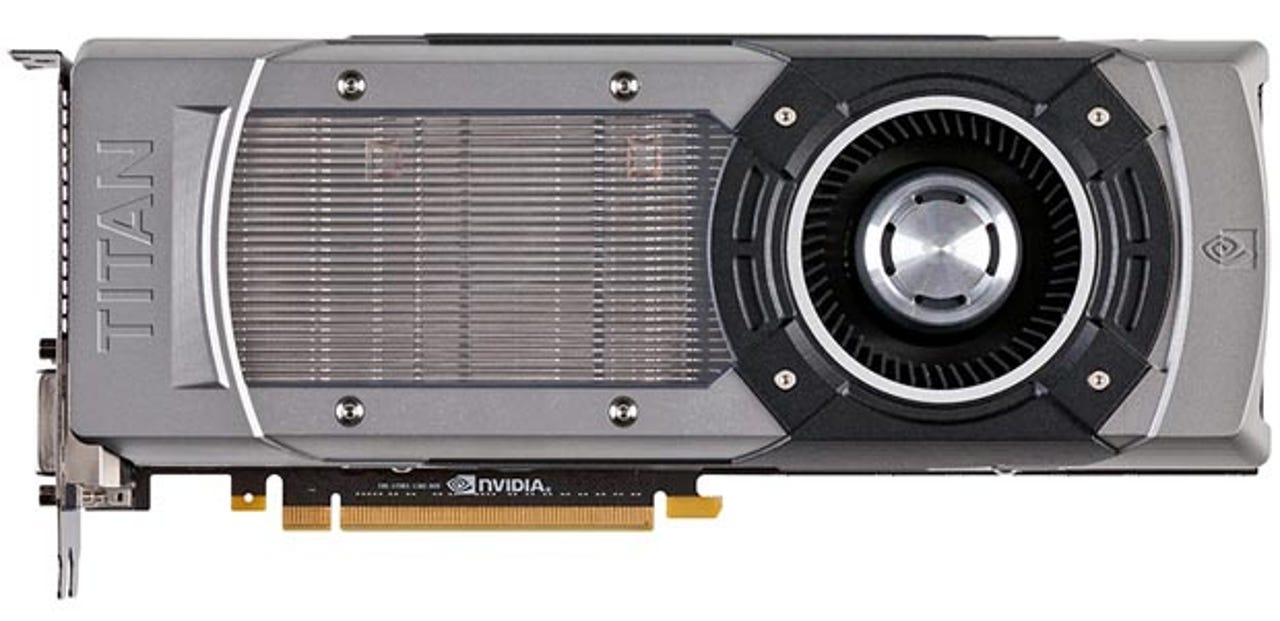Nvidia launches $1,000 GeForce GTX Titan desktop graphics card


In addition to debuting a new Tegra 4i chip with LTE capabilities, today Nvidia has also unleashed what it's touting as its most powerful single-GPU desktop graphics card ever. Dubbed the GeForce GTX Titan, it will set you back a cool $1,000, unless you are buying it as part of one of the new gaming systems featuring the card (see more below), which will cost you even more.
Unlike the similarly priced Nvidia GeForce GTX 690, which is comprised of two GPUs, the Titan is based on the GK110 "Kepler" architecture, though with some tweaks. Those include 6GB of GDDR5 video memory with a 384-bit memory interface, along with an enormous aluminum heatsink and a vapor chamber to cool things down. The company has also rolled out an updated version of its GPU Boost technology, which monitors temperature and power numbers and adjusts graphics performance accordingly to maximize efficiency.
While hard-core gamers will no doubt drool over the capabilities -- according to AnandTech, it promises "46% more shading/compute and texturing performance, 25% more pixel throughput, and a full 50% more memory bandwidth than [the] GTX 680" -- the Titan stems from the Titan supercomputer used by the Oak Ridge National Laboratory and based on Nvidia's GPUs. As such, AnandTech says the card could serve as an entry-level GPU compute product.
At the same time, Nvidia is hoping the Titan will spur the growth in small-form-factor gaming PCs. These range from Falcon Northwest's Tiki to Velocity Micro's Micro Raptor. Of course, you also have the option to hook three Titans togther in a triple SLI configuration, and that requires a traditional desktop tower like the Maingear Shift or a liquid-cooled Origin PC system.
One thing we don't know yet is how the Titan performs in third-party benchmark testing from independent sources. HotHardware points out performance results from reviewers are still under embargo. If it performs as expected, will the Titan be a success for Nvidia? Or is it just an expensive niche product? Let us know your thoughts in the Talkback section below.